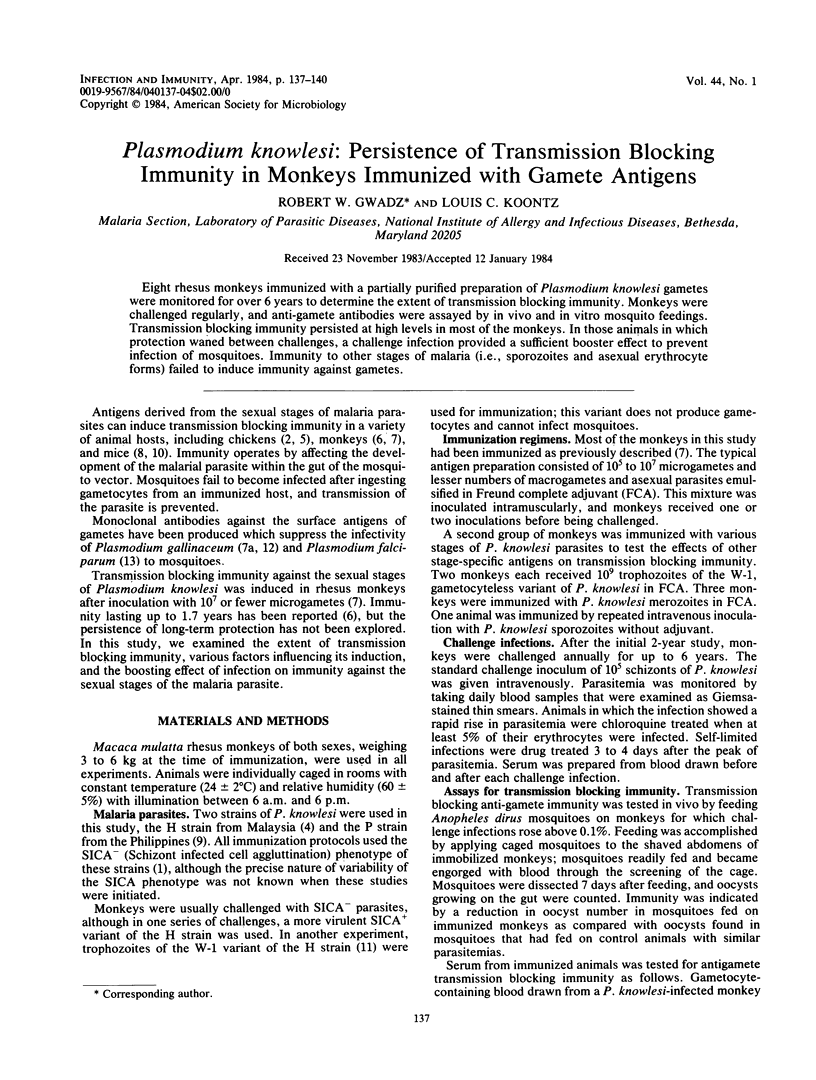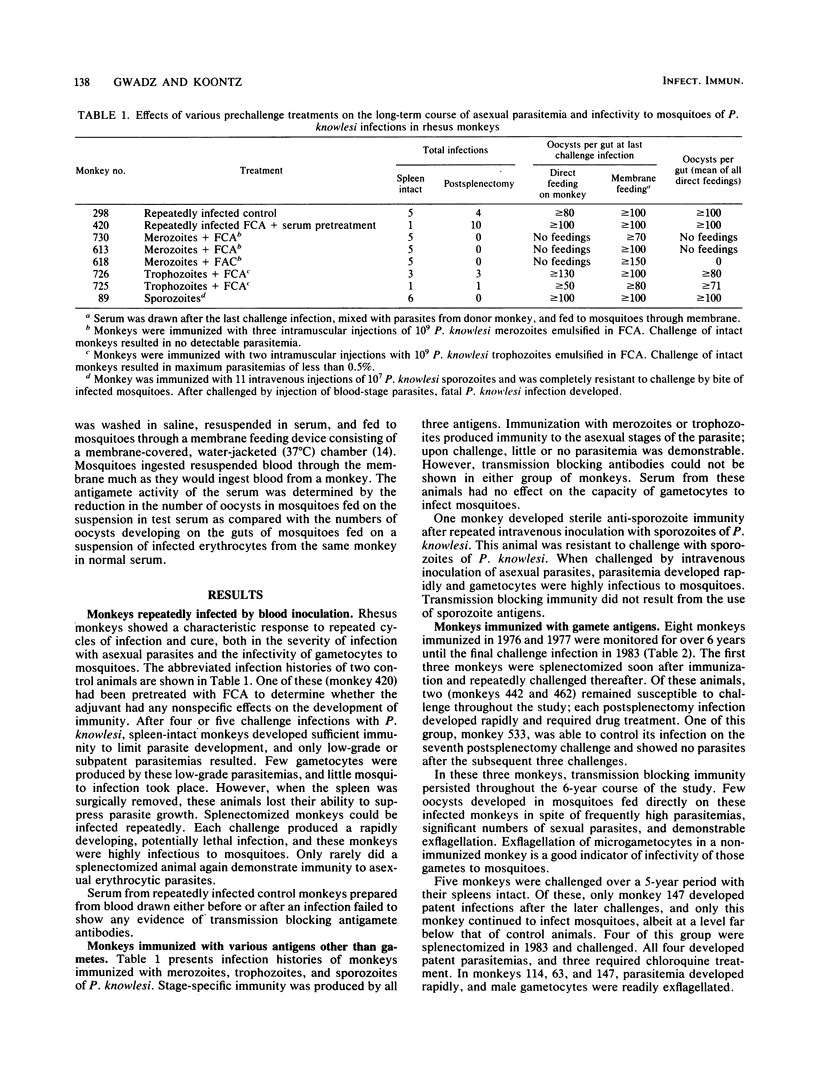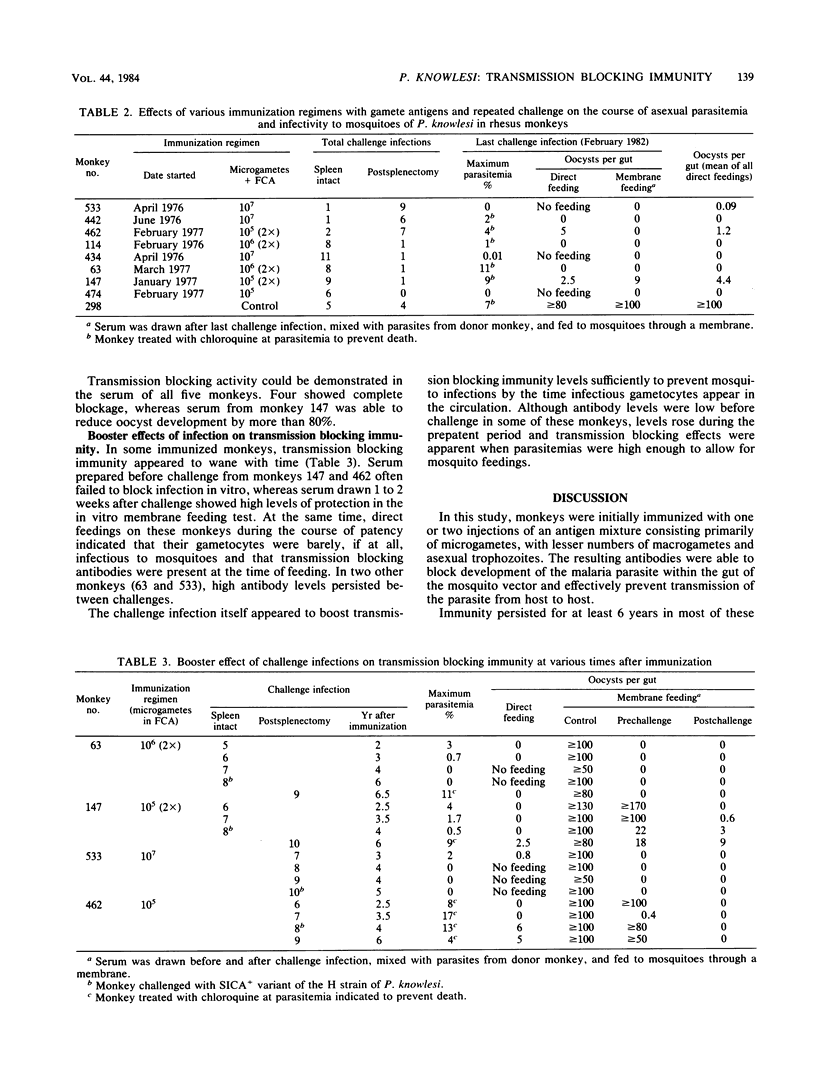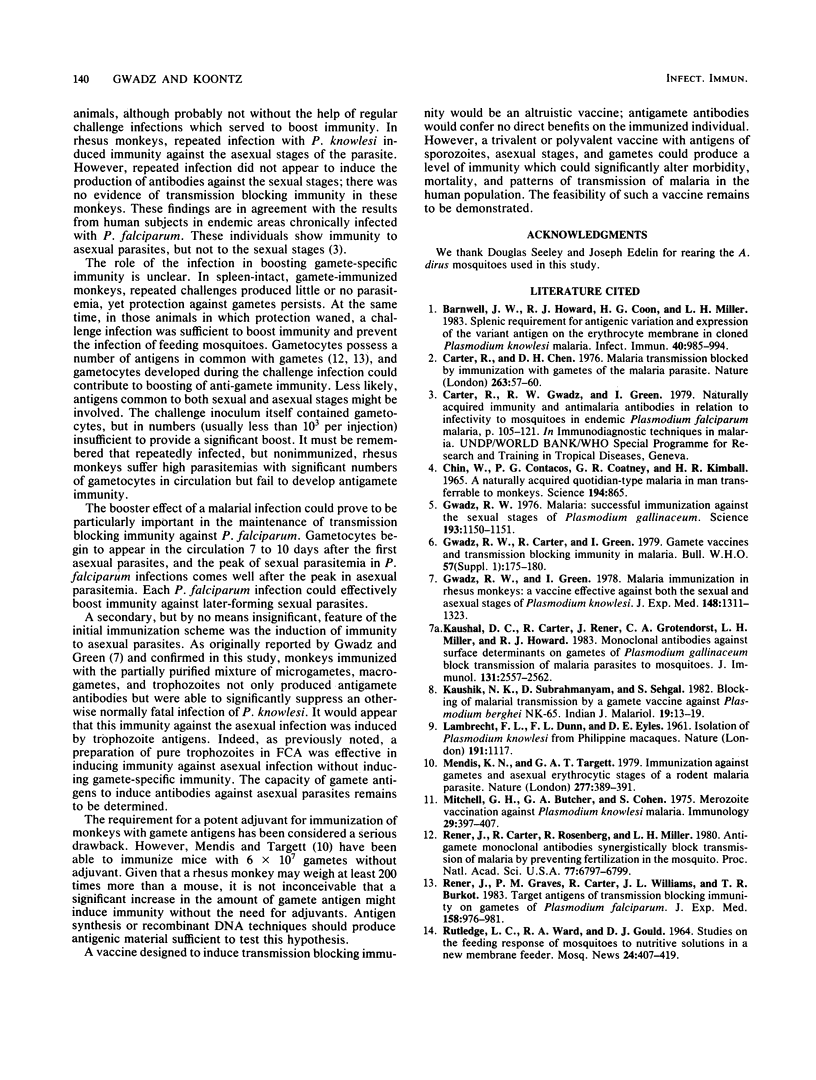Abstract
Eight rhesus monkeys immunized with a partially purified preparation of Plasmodium knowlesi gametes were monitored for over 6 years to determine the extent of transmission blocking immunity. Monkeys were challenged regularly, and anti-gamete antibodies were assayed by in vivo and in vitro mosquito feedings. Transmission blocking immunity persisted at high levels in most of the monkeys. In those animals in which protection waned between challenges, a challenge infection provided a sufficient booster effect to prevent infection of mosquitoes. Immunity to other stages of malaria (i.e., sporozoites and asexual erythrocyte forms) failed to induce immunity against gametes.
Full text
PDF



Selected References
These references are in PubMed. This may not be the complete list of references from this article.
- Barnwell J. W., Howard R. J., Coon H. G., Miller L. H. Splenic requirement for antigenic variation and expression of the variant antigen on the erythrocyte membrane in cloned Plasmodium knowlesi malaria. Infect Immun. 1983 Jun;40(3):985–994. doi: 10.1128/iai.40.3.985-994.1983. [DOI] [PMC free article] [PubMed] [Google Scholar]
- CHIN W., CONTACOS P. G., COATNEY G. R., KIMBALL H. R. A NATURALLY ACQUITED QUOTIDIAN-TYPE MALARIA IN MAN TRANSFERABLE TO MONKEYS. Science. 1965 Aug 20;149(3686):865–865. doi: 10.1126/science.149.3686.865. [DOI] [PubMed] [Google Scholar]
- Carter R., Chen D. H. Malaria transmission blocked by immunisation with gametes of the malaria parasite. Nature. 1976 Sep 2;263(5572):57–60. doi: 10.1038/263057a0. [DOI] [PubMed] [Google Scholar]
- Gwadz R. W., Carter R., Green I. Gamete vaccines and transmission-blocking immunity in malaria. Bull World Health Organ. 1979;57 (Suppl 1):175–180. [PMC free article] [PubMed] [Google Scholar]
- Gwadz R. W., Green I. Malaria immunization in Rhesus monkeys. A vaccine effective against both the sexual and asexual stages of Plasmodium knowlesi. J Exp Med. 1978 Nov 1;148(5):1311–1323. doi: 10.1084/jem.148.5.1311. [DOI] [PMC free article] [PubMed] [Google Scholar]
- Gwadz R. W. Successful immunization against the sexual stages of Plasmodium gallinaceum. Science. 1976 Sep 17;193(4258):1150–1151. doi: 10.1126/science.959832. [DOI] [PubMed] [Google Scholar]
- Kaushal D. C., Carter R., Rener J., Grotendorst C. A., Miller L. H., Howard R. J. Monoclonal antibodies against surface determinants on gametes of Plasmodium gallinaceum block transmission of malaria parasites to mosquitoes. J Immunol. 1983 Nov;131(5):2557–2562. [PubMed] [Google Scholar]
- LAMBRECHT F. L., DUNN F. L., EYLES D. E. Isolation of Plasmodium knowlesi from Philippine macaques. Nature. 1961 Sep 9;191:1117–1118. doi: 10.1038/1911117a0. [DOI] [PubMed] [Google Scholar]
- Mendis K. N., Targett G. A. Immunisation against gametes and asexual erythrocytic stages of a rodent malaria parasite. Nature. 1979 Feb 1;277(5695):389–391. doi: 10.1038/277389a0. [DOI] [PubMed] [Google Scholar]
- Mitchell G. H., Butcher G. A., Cohen S. Merozoite vaccination against Plasmodium knowlesi malaria. Immunology. 1975 Aug;29(2):397–407. [PMC free article] [PubMed] [Google Scholar]
- Rener J., Carter R., Rosenberg Y., Miller L. H. Anti-gamete monoclonal antibodies synergistically block transmission of malaria by preventing fertilization in the mosquito. Proc Natl Acad Sci U S A. 1980 Nov;77(11):6797–6799. doi: 10.1073/pnas.77.11.6797. [DOI] [PMC free article] [PubMed] [Google Scholar]
- Rener J., Graves P. M., Carter R., Williams J. L., Burkot T. R. Target antigens of transmission-blocking immunity on gametes of plasmodium falciparum. J Exp Med. 1983 Sep 1;158(3):976–981. doi: 10.1084/jem.158.3.976. [DOI] [PMC free article] [PubMed] [Google Scholar]


